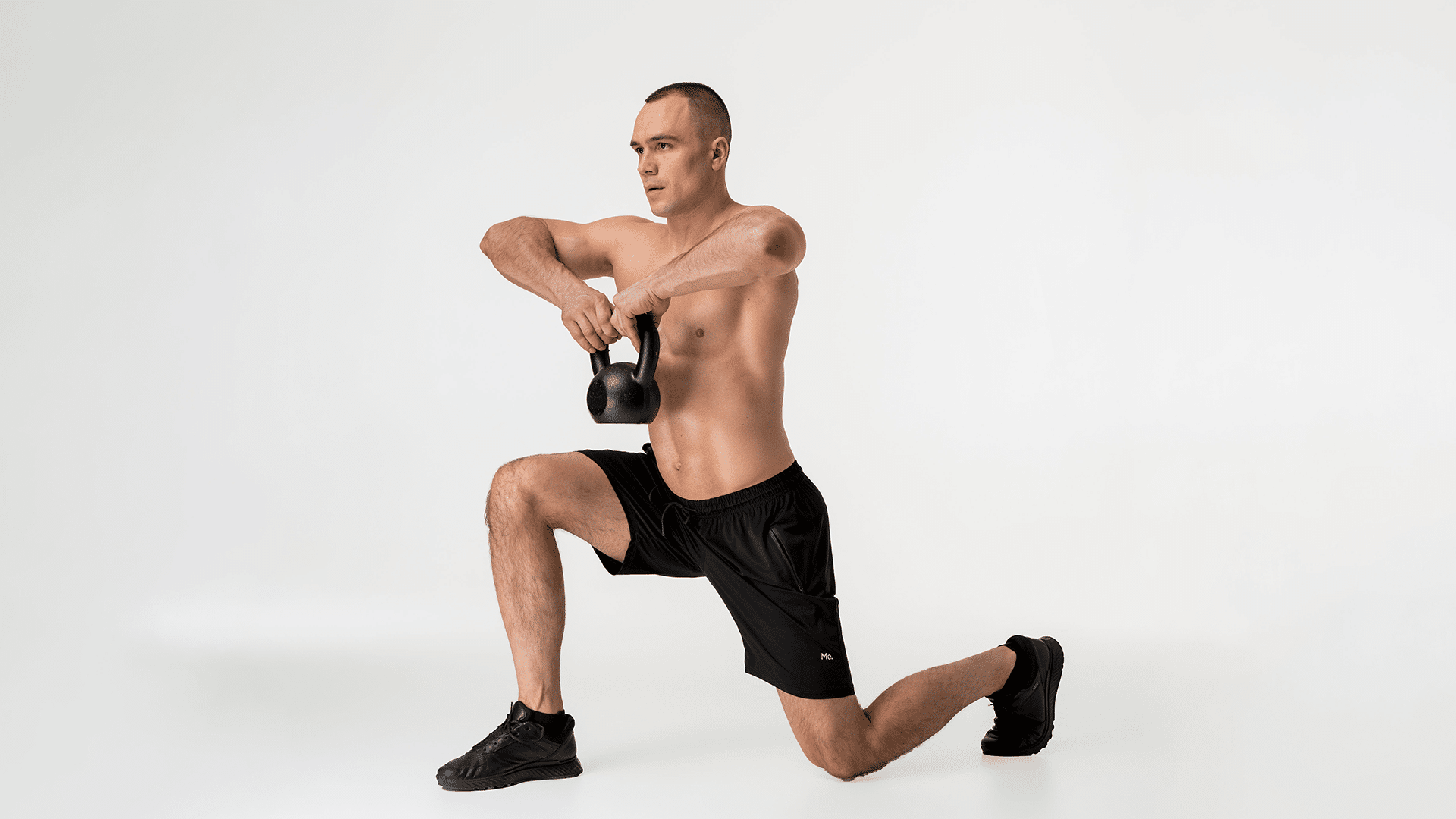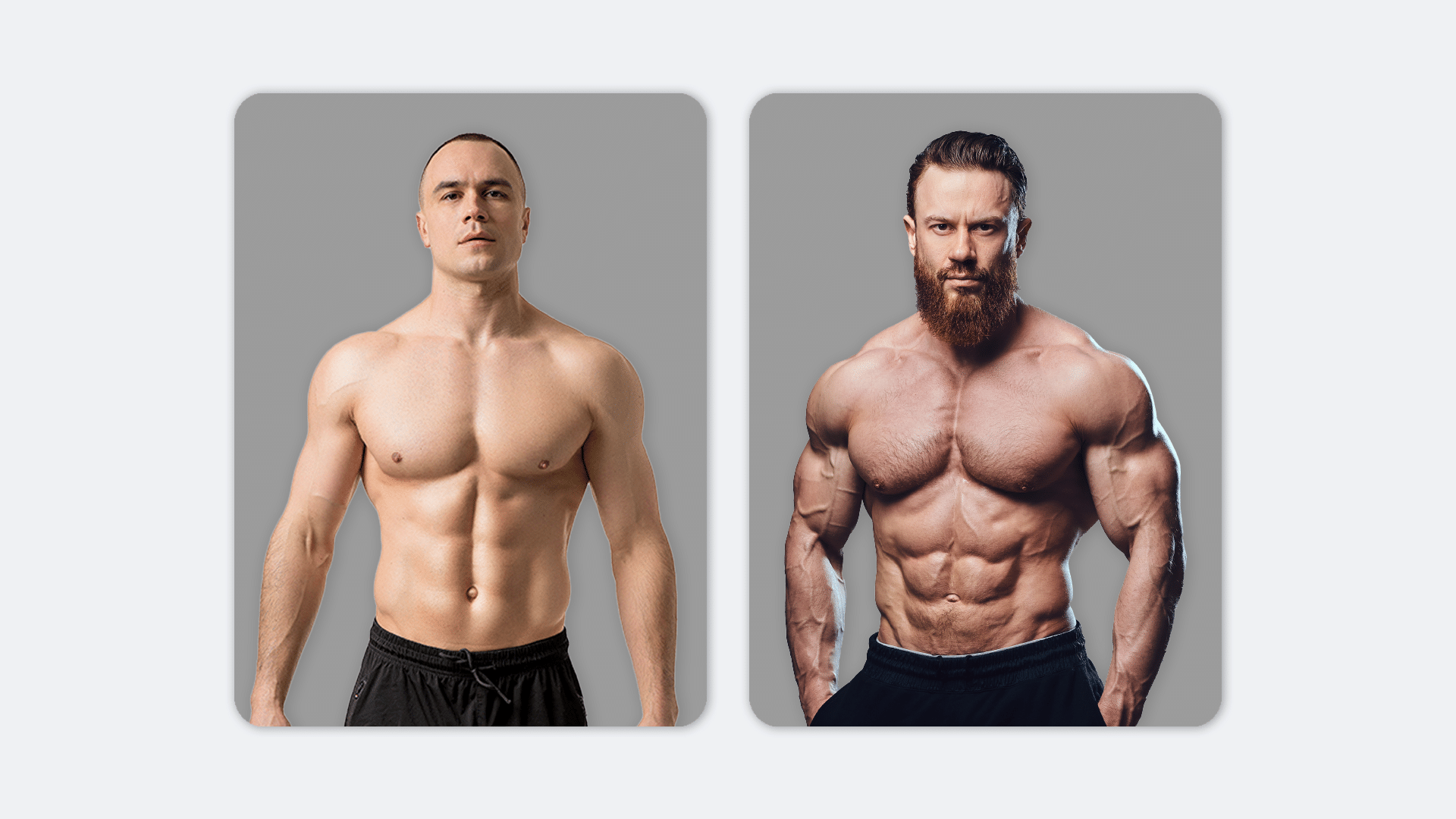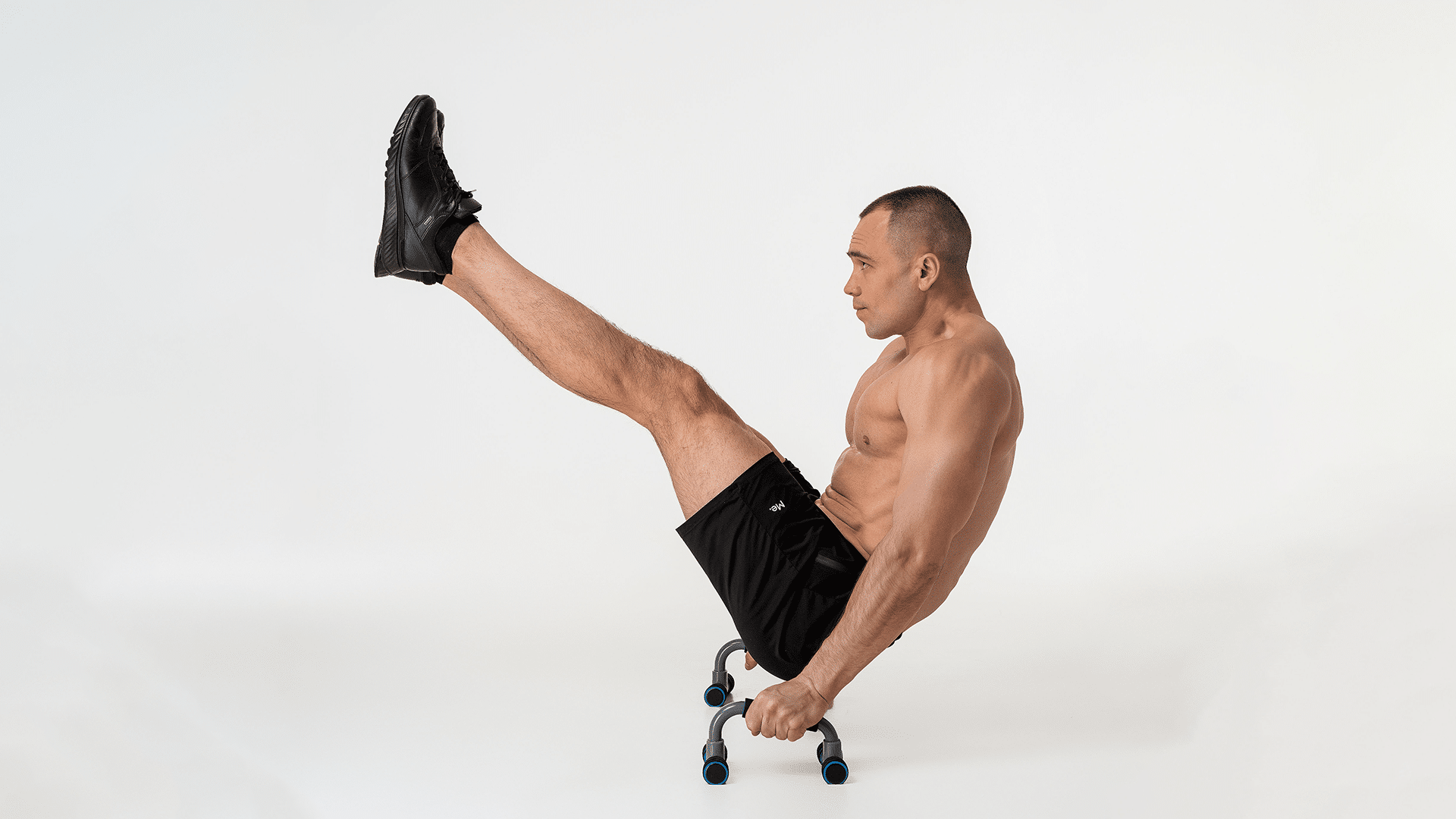If you’ve been struggling with lower back pain (LBP), you’re not alone. Recent statistics show that up to 80% of adults experience LBP at some point in their lifetime, making it a common health concern globally (1).
And while there are many probable causes, from poor posture to sedentary lifestyles, the solution may not be as complex as you think. Neither does it involve quitting your desk job that has you sitting for hours.
Lower back calisthenics, a form of exercise that uses the weight of your body to build strength, may be the solution you’ve been looking for. Here we’ve simplified this approach into a beginner-friendly guide.
Is Calisthenics Good for Lower Back?
Yes, it is. We call calisthenics the answer to “modern-day ailments” in the fitness world. And that’s because it not only helps you build functional strength but also serves as a preventive measure against injuries and pain.
Let’s take a moment in the day of the average Joe/Jane. Wake up, commute to work (while sitting), sit at a desk for 8 hours, and return home (again while sitting) only to collapse in bed. All this time, you’re probably not using your lower back muscles much at all.
This sedentary lifestyle leads to muscle imbalances, where some muscles are overly strong while others are weak. In the case of lower back pain, weak core and glute muscles are the primary points of interest.
Lean and toned up body isn’t just a far-fetched fantasy. Check out the BetterMe app and watch it propel your weight loss journey into high gear!
The American Council on Exercise (ACE) highlights the following three ways through which too much sitting time leads to lower back pain:
An Inactive Core
Your core muscles are created to engage and endure. Movement, stretching, and standing all promote your core’s strength. Even sitting does, but only when you have the correct posture.
Unfortunately, while sitting improperly or for long periods at a time, your core kind of “goes to sleep.” It gets inactive and doesn’t have practice to respond well to the demands of physical activities (2).
Disengaged Glutes
The primary role of the gluteal muscles is to help with hip extension and rotation. However, prolonged sitting can lead to these muscles becoming inactive and can weaken over time. Without strong glutes, your lower back may have to work harder, leading to pain and discomfort (2).
Tight Muscles
Sitting for too long can also lead to tight hip flexors. These muscles run from the thigh bone to the pelvis and can contribute to lower back pain when they are shortened due to prolonged sitting (2).
So, how do lower back calisthenics exercises remedy this?
Let’s take a look at one trusty exercise as an example; the plank.
The plank is a simple exercise that targets your core and glutes. By holding the plank position you engage your core muscles and strengthen them over time. Additionally, you activate your glutes, helping to alleviate pressure on your lower back by distributing it more evenly throughout your body.
Essentially, lower back calisthenics serve multiple purposes as far as lower back strength and health:
Prevention
If sitting all day disengages, strains, or even weakens your muscles, then regular calisthenics can help to increase strength and proper function.. As a result, you’ll be preventing potential lower back pain as well as injuries (4).
Treatment
Assuming you’re already experiencing lower back pain, calisthenics can help alleviate it. With the absence of discomfort, a go-ahead from your physician, and some knowledge of exercise execution, you can use an appropriate calisthenics back workout to rehabilitate (4).
Maintenance
Unless you’re going to quit your desk job (which, by the way, would not be the solution), you’ll need a strategy to keep your lower back strong. Calisthenics lower back exercises provide a routine that’s easy to fit into your daily schedule and still work towards maintaining a healthy back (4).
Read more: How To Start Calisthenics At Home With Zero Experience
What Calisthenics Target Lower Back?
Any bodyweight exercises that engage the lower back muscles (we’re talking specifically about the erector spinae, multifidus, and quadratus lumborum muscles) can be considered lower back calisthenics. Some effective lower back calisthenics with no equipment include:
- Plank
- Superman
- Bird Dog
- Glute Bridges
- Reverse Snow Angels
Here’s a detailed guide to executing each of the five moves above
Plank
The plank, as we mentioned earlier, really is a trusty exercise to add to your lower back calisthenics at home. Why? Three reasons; It’s beginner-friendly, can be modified (made easier or harder depending on your level), and engages all the core muscles.
To perform a plank:
- Position yourself on all fours: Start by getting down onto the floor as if you’re about to perform a push-up.
- Place your forearms on the ground: Lower your forearms to the floor with elbows aligned below your shoulders and arms parallel to your body at about shoulder-width distance.
- Extend your legs: Extend your legs behind you, toes tucked into the ground. Your body should form a straight line from your head to your heels.
- Tuck in your belly button: Slightly tuck your belly button into your spine to engage your core muscles.
- Align your head with your spine: Keep your head relaxed looking at the floor, making sure it’s in line with your back.
- Hold the position: Hold this position without allowing your lower back to sag. Your body should form a straight line from your shoulders to your heels.
- Breathe calmly: Breathe steadily and hold this position as long as you can without compromising form.
- Start with short holds: Start with short holds of about 20 seconds and gradually increase the duration as you build strength.
- Rest and repeat: After each hold, rest for the same amount of time as your hold. Repeat this process for about 3-5 sets.
A calisthenics back workout for a beginner may be appropriate to start with a knee plank. You might find it difficult to hold up your body weight or maintain proper form. To modify the exercise you can perform a plank on your knees. This reduces some of the load and makes it easier to maintain proper form.
Here’s how:
- Position yourself on all fours: Begin in the same position as for the full plank.
- Place your knees on the ground: Instead of extending your legs behind you, place your knees on the ground.
- Follow the same steps 4-9 from above.
Superman
Just like the name suggests, this exercise mimics the position of a flying superhero.
The superman exercise targets your lower back muscles and can help improve posture. It particularly strengthens the erector spinae muscles, which run along your spine and are responsible for maintaining a neutral spine position.
To perform a superman:
- Lay flat on your stomach on a comfortable, solid surface, preferably a yoga mat. Stretch your arms out in front of you, keeping your legs straight behind.
- Spread your arms and legs such that they are shoulder-width and hip-width apart respectively.
- Engage your core muscles to maintain a neutral spine.
- Slowly raise your arms and legs off the ground simultaneously. Be mindful to lift using your back and glute muscles, not your neck.
- Try to lift your thighs and chest off the ground, leaving only your stomach and pelvic region in contact with the ground. Hold this position, imitating the flying posture of Superman.
- Ensure that you keep your neck neutral by looking at the floor instead of in front of you.
- Hold this position for a few seconds, focusing on the contraction of your back muscles.
- Slowly lower your arms and legs back to the starting position.
- Repeat the exercise for the recommended number of times, typically 3 sets of 10-15 repetitions.
Bird Dog
The bird dog is a great exercise to improve balance and coordination while targeting your lower back muscles. It also strengthens the core, glutes, and shoulders. Despite its origins in yoga, this exercise has become a staple in many calisthenics routines.
To perform a bird dog:
- Start on all fours with your hands and knees on the ground, shoulder-width apart.
- Engage your core muscles and keep your back straight.
- Slowly extend your left leg behind you while simultaneously raising your right arm forward until they are both parallel to the ground.
- Hold this position for a few seconds, focusing on keeping your body stable and balanced.
- Slowly lower your arm and leg back down to the starting position.
- Repeat with the opposite side (right leg and left arm).
- Continue alternating sides for the recommended number of times, typically 3 sets of 10-15 repetitions.
Looking for a way to break the vicious cycle of weight loss and tone up all the jiggly parts? Watch the extra pounds fly off and your muscles firm up with the BetterMe app!
Glute Bridges
While primarily targeting the glutes, this exercise also engages your lower back muscles. It helps improve hip mobility and strengthen the posterior chain, making it a great addition to any calisthenics routine for a strong and healthy back.
In our piece on lower body calisthenics, we mentioned that glute bridges are also effective for targeting the hamstrings and adductors. All these muscles are connected to the lower back, making this exercise a two-for-one deal.
To perform a glute bridge:
- Lay flat on your back with your knees bent and feet flat on the floor shoulder-width apart.
- Engage your core muscles to maintain a neutral spine.
- Push through your heels and squeeze your glutes to lift your hips off the ground until you form a straight line from your knees to your shoulders.
- Hold this position for a few seconds, focusing on the contraction in your glutes and hamstrings.
- Slowly lower your hips back down to the starting position.
- Repeat for the recommended number of times, typically 3 sets of 10-15 repetitions.
Reverse Snow Angels
This exercise is a variation of the superman and targets the muscles in your upper back. It also strengthens your shoulders and improves posture.
Upper back calisthenics are actually quite underrated, but they are essential for a well-rounded back workout and overall upper body strength. Plus, to some extent, posture correction is a key aspect of back workouts. Knowing this, don’t skip out on this exercise!
To perform reverse snow angels:
- Lay flat on your stomach: Find a comfortable, solid surface, preferably a yoga mat, and lie down flat on your stomach. Extend your arms out in front of you and keep your legs straight behind you.
- Position your palms down: Make sure your palms are facing down towards the floor.
- Engage your core muscles: Keep your spine neutral and engage your core muscles.
- Lift your arms and legs: Slowly lift your arms and legs off the ground, similar to the starting position of the Superman exercise. Your thighs, chest, and hands should be off the ground, leaving only your stomach and pelvic region in contact with the floor.
- Move your arms to the side: While keeping your arms and legs off the ground, slowly move your arms to the side as if you were making a snow angel. Your arms should form a semi-circle as they move towards your hips.
- Return your arms to the original position: Once your arms reach your hips, reverse the motion to bring your arms back to the initial position in front of you. This counts as one repetition.
- Keep your neck neutral: Ensure your neck remains neutral throughout the exercise by keeping your gaze fixed on the floor instead of in front of you.
- Repeat the exercise: Repeat the reverse snow angel movement for the recommended number of times, typically 3 sets of 10-15 repetitions.
- Lower your arms and legs: After completing your sets, slowly lower your arms and legs back to the starting position. Remember to breathe calmly and maintain a controlled motion throughout the exercise.
How Do You Build Your Lower Back With Calisthenics?
Knowing what to do is one thing, knowing how to do it is another. The thing about lower back calisthenics is, that if you’re not using the proper form, you may not be engaging the correct muscles effectively.
In some cases, you may even be putting yourself at risk for injury. We’ve discussed more on proper form in our calisthenics arm workouts article.
Here’s exactly how to use lower back calisthenics exercises at home, or at the gym, to build muscle:
Know That Nothing Matters More Than Form
You’ll hear this advice a lot, but that’s because it truly is vital. In order to get the most out of your lower back exercises, you have to maintain proper form. That means keeping your spine neutral, engaging your core muscles, and focusing on the contraction of the targeted muscles.
If you find yourself using momentum or other muscle groups to complete an exercise, you need to re-evaluate your form.
Start Slowly and Progress Gradually
Slow but sure really does win the race, as far as lower back calisthenics goes. You’ve got the sure part covered when you master form, but that doesn’t mean you should rush it.
Start with a low number of repetitions and sets, then slowly increase as you get stronger (3). Our calisthenics to build muscle post covers more about this in detail.
There are two important reasons for this:
- Lower back muscles are small and can fatigue quickly if you’re not used to working them.
- Rushing into high intensity too soon can lead to injury.
Be Super Attentive During and After Exercise
Pain is hardly ever a good thing, especially when it comes to working out. If you feel sharp pain during or after an exercise, stop immediately and re-evaluate your form. Dull muscle soreness is normal after a workout, but sharp pain is not.
Differentiating between the two takes time and practice, so if you’re unsure it’s always better to err on the side of caution.
It’s probably normal if; the discomfort subsides within a day or two, and if it feels like your muscles are sore. It’s probably not normal if; the pain persists for more than a few days and is sharp or intense. If this happens, seek professional advice before continuing with your workouts.
Read more: Calisthenics Equipment for Home: Your Ultimate Guide to Building the Perfect Gym
The Bottom Line
Lower back pain can be debilitating and hinder everyday activities. By incorporating calisthenics exercises like reverse snow angels and glute bridges into your workout routine, you can strengthen the muscles in your lower back, improving their stability and reducing the risk of injury.
Remember to focus on proper form, start slowly and progress gradually, and pay attention to any discomfort or pain during and after exercise.
DISCLAIMER:
This article is intended for general informational purposes only and does not serve to address individual circumstances. It is not a substitute for professional advice or help and should not be relied on for making any kind of decision-making. Any action taken as a direct or indirect result of the information in this article is entirely at your own risk and is your sole responsibility.
BetterMe, its content staff, and its medical advisors accept no responsibility for inaccuracies, errors, misstatements, inconsistencies, or omissions and specifically disclaim any liability, loss or risk, personal, professional or otherwise, which may be incurred as a consequence, directly or indirectly, of the use and/or application of any content.
You should always seek the advice of your physician or other qualified health provider with any questions you may have regarding a medical condition or your specific situation. Never disregard professional medical advice or delay seeking it because of BetterMe content. If you suspect or think you may have a medical emergency, call your doctor.
SOURCES:
- Low back pain (2023,who.int)
- 5 Lower Back Bodyweight Exercises to Ward off Low Back Pain (2017,ace.org)
- Progressive overload without progressing load? The effects of load or repetition progression on muscular adaptations (2022,nih.gov)
- The Effect of Breaking Up Sedentary Time with Calisthenics on Neuromuscular Function: A Preliminary Study (2022,nih.gov)










